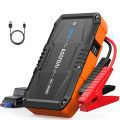If you’ve ever been greeted by the unsettling glow of your tire pressure warning light, you know how concerning it can be. This guide is here to help you navigate the process of turning off that alert with ease and confidence. Understanding that your safety and peace of mind are paramount, we’ll walk you through each step to ensure your vehicle operates optimally, allowing you to focus on what truly matters—enjoying the journey ahead. Let’s get started on restoring your vehicle’s tire pressure monitoring system so you can drive with assurance.



Check Tire Pressure
Use a tire pressure gauge to measure the air pressure in each tire. Press the gauge firmly onto the valve stem of each tire and note the reading displayed on the gauge. Compare these readings to the manufacturer’s recommended pressure, which is typically located on a sticker inside the driver’s door or in the owner’s manual. Adjust the air pressure as needed, adding or releasing air until the readings align with the recommended levels for optimal safety and performance.


Inflate or Deflate Tires
Check the tire pressure using a reliable gauge. If the gauge indicates that a tire is under-inflated, add air by using an air compressor or a manual pump until it matches the vehicle manufacturer’s recommended PSI, often found on the driver’s side door jamb or in the owner’s manual. For example, if the recommended pressure is 32 PSI and your tire reads 28 PSI, inflate it until it reaches the correct level.
If a tire is over-inflated, release some air by pressing the valve stem until the pressure drops to the recommended level. For instance, if your tire shows 36 PSI when it should be 32 PSI, let out some air until the gauge reflects the proper pressure. Repeat the process for each tire, ensuring all are at the optimal inflation for safe driving.
Inspect for Damage
Examine each tire for visible signs of damage, including cuts, punctures, or bulges. Look for any embedded objects, such as nails or glass, which could indicate a puncture. Check the sidewalls for cracks or bulges, as these can compromise the tire’s integrity. If you identify any damage, mark the area for reference, and assess whether a repair kit can fix it or if the tire needs to be replaced entirely before continuing with your journey.
Reset the TPMS
Locate the TPMS reset button, which is typically found under the steering wheel or in the glove compartment. Press and hold the button firmly until you see the tire pressure warning light blink three times. Once the light has blinked three times, release the button and check if the warning light turns off. If the light remains on, repeat the process or consult your vehicle’s manual for further troubleshooting.
Turn the Ignition On
Turn the ignition key to the ‘On’ position without starting the engine. Check the dashboard for the tire pressure warning light. If the light is off, confirm that the reset was successful. If the light remains illuminated, repeat the reset process.
Drive the Vehicle
- Drive the vehicle for approximately 10-15 minutes.
- Maintain a speed of 50 mph or higher during this time.
- Monitor the Tire Pressure Monitoring System (TPMS) warning light for any changes.
- Allow the TPMS to recalibrate itself while driving, which may help turn off the warning light if the tire pressures are normal.
Check the Owner’s Manual
Consult the vehicle’s owner’s manual if the warning light remains illuminated. Locate the section that addresses warning lights and alerts for your specific model. Follow the detailed instructions provided, as each vehicle may have unique reset procedures. Ensure that you understand any additional steps that may be required to resolve the issue.
Use a Diagnostic Tool
- Check for error codes using an OBD-II scanner if manual methods fail.
- Connect the scanner to the vehicle’s OBD-II port, typically located under the dashboard near the driver’s seat.
- Follow the scanner’s prompts to retrieve any error codes related to the Tire Pressure Monitoring System (TPMS).
- Note down the error codes displayed, as they can indicate specific issues like sensor malfunctions or communication failures.
- If you do not have access to an OBD-II scanner, visit a trusted mechanic who can perform the scan for you.
- Ask the mechanic to provide a readout of the error codes and discuss potential solutions based on the findings.
- For example, if the code indicates a faulty TPMS sensor, plan to replace or repair the sensor as recommended.
Seek Professional Help
Observe the warning light closely. If it remains illuminated after attempting the recommended steps, schedule an appointment with a certified mechanic. Request diagnostic testing to pinpoint the issue, as it may indicate a malfunctioning sensor or another system problem. Follow up with necessary repairs based on the mechanic’s findings to ensure your vehicle operates safely and efficiently.
Regular Maintenance
Check tire pressures at least once a month using a reliable pressure gauge. Inspect tires for any visible damage, such as cuts, cracks, or bulges, and replace any tires that show signs of significant wear. Perform routine maintenance on the Tire Pressure Monitoring System (TPMS) as outlined in your owner’s manual, which may include resetting the system after tire changes or ensuring sensors are functioning properly. Keep a record of all maintenance activities to track when inspections and adjustments are due.
Final Thoughts and Tips
In conclusion, turning off the tire pressure warning light requires a few straightforward steps: check and adjust your tire pressures, reset the Tire Pressure Monitoring System (TPMS), and consult a professional if issues persist. By staying proactive with regular tire maintenance, you can enhance your vehicle’s performance and ensure a safer driving experience. Remember, addressing tire pressure issues promptly not only contributes to your safety but also prolongs the life of your tires.
Essential Items Needed
- Tire pressure gauge
- Air compressor or tire inflator
- Tire deflator (if necessary)
- Tire repair kit (for damage inspection)
- TPMS reset tool (if applicable)
- Vehicle owner’s manual
- Diagnostic tool (OBD-II scanner)
- Jack and jack stands
- Lug wrench
- Safety gloves



Quick Fixes Explained
- Check Tire Pressure: Use a reliable tire pressure gauge to measure the air pressure in all tires, including the spare. Inflate or deflate them to the manufacturer’s recommended levels
- Inspect for Damage: Look for any visible signs of damage or punctures on the tires that may cause a pressure drop
- Reset the Warning Light: After correcting the tire pressure, reset the warning light by following the vehicle’s manual instructions, which usually involves turning the ignition on and off or pressing a reset button
- Check the Valve Stems: Ensure that valve stems are not damaged or leaking air. Replace them if necessary
- Inspect the Tire Sensors: If your vehicle is equipped with tire pressure monitoring sensors, check for any malfunction or dead batteries in the sensors
- Look for Faulty Wiring: Examine the wiring connected to the tire pressure monitoring system for any signs of wear or damage
- Use a Diagnostic Tool: If the warning light persists, consider using an OBD-II diagnostic tool to check for any error codes related to the tire pressure monitoring system
- Visit a Professional: If you’re unable to resolve the issue, consult a professional mechanic or tire specialist for a thorough inspection and repair
- Monitor Regularly: Make it a habit to check tire pressures regularly to prevent the warning light from coming on in the future
- Stay Informed: Read your vehicle’s owner’s manual for specific instructions and guidelines related to the tire pressure monitoring system and warning light
Step-by-Step Guide to Effectively Monitor and Maintain Tire Pressure
- Understand the Basics: Familiarize yourself with how Tire Pressure Monitoring Systems (TPMS) work. TPMS uses sensors in your tires to measure air pressure and alert you when levels are too low or too high
- Check the Dashboard Indicator: Learn to recognize the dashboard warning light that indicates a tire pressure issue. A yellow exclamation mark inside a horseshoe shape typically signifies that one or more tires need attention
- Regularly Monitor Tire Pressure: Use a tire pressure gauge to manually check your tire pressure at least once a month and before long trips. Compare the readings to the recommended pressure listed on the driver’s side door jamb or in your vehicle’s manual
- Respond to Alerts Promptly: If the TPMS alerts you to low tire pressure, check the affected tire(s) as soon as possible. Inflate them to the proper pressure or visit a service station if you are unsure how to do it yourself
- Know When to Seek Professional Help: If the TPMS light remains on after correcting tire pressure or if it blinks, it may indicate a malfunction. In such cases, consult a professional mechanic for diagnostics and repairs
Understanding Tire Pressure Monitoring Systems (TPMS)
How does a direct TPMS differ from an indirect TPMS?
A direct Tire Pressure Monitoring System (TPMS) and an indirect TPMS differ primarily in how they measure and report tire pressure.
- Direct TPMS: This system uses sensors mounted directly on each tire to measure the tire’s air pressure. These sensors transmit real-time data to the vehicle’s onboard computer. If the pressure drops below a specified threshold, the system alerts the driver. Direct TPMS can provide precise readings of each tire’s pressure and often includes temperature monitoring.
- Indirect TPMS: This system does not use physical pressure sensors in the tires. Instead, it relies on the vehicle’s ABS (Anti-lock Braking System) wheel speed sensors to monitor the relative rotation speeds of the tires. If one tire is underinflated, it will have a smaller diameter and therefore rotate faster than the properly inflated tires. The system interprets these changes in rotation speed to determine if a tire’s pressure is low. While indirect TPMS is generally less expensive and easier to maintain, it may not provide as accurate or timely information as direct TPMS.
In summary, the key difference lies in the measurement method: direct TPMS uses individual tire sensors for accurate pressure readings, while indirect TPMS uses existing vehicle sensors to infer pressure based on tire rotation.






If you’re looking for an extra layer of safety, consider getting a tire pressure monitoring app like TireMinder. It gives real-time updates and alerts you before the light even comes on. Just a little tech to keep things in check! 📱
That’s a fantastic suggestion! Technology can really help us stay on top of vehicle maintenance. Apps like TireMinder can be a valuable tool for monitoring tire health. Thanks for sharing!
Is it just me, or are tire pressure sensors super sensitive? I recently had my tires checked at a local shop, and they found nothing wrong. But the light still wouldn’t go off. I ended up using a TPMS reset tool from TireMinder, and that did the trick! If you’re having issues, consider investing in one of those tools—super handy! 🛠️
Great suggestion! TPMS reset tools can definitely make the process smoother. Thanks for sharing the brand name too—it’s always good to know what works for others. Happy driving!
I’d love to see a guide on how to choose the best tires for different weather conditions! It’s such an important topic and could really help people make informed choices. Tires can make or break your driving experience!
Great idea! Choosing the right tires for the season is crucial for safety and performance. We’ll definitely consider creating a guide on that topic. Thanks for the suggestion!
I had this annoying tire pressure light on my Ford Fusion for weeks! I followed the steps in this guide, and it turned out my rear left tire was way under-inflated. After inflating it to the right pressure, the light went off after a short drive. So happy to finally get rid of that warning! Definitely check your tire pressures first, it’s the easiest fix! 🚗💨
For those of you using the TPMS in a Kia Sorento, I found that sometimes just driving for a bit doesn’t reset the light. I had to turn the ignition off and then on a few times before it worked. Keep that in mind if you have a stubborn warning light!
Thanks for the tip! Different car models can indeed have varying behaviors with TPMS resets. It’s always helpful to share specific experiences like yours. Hopefully, it helps others with similar models!
Thanks for sharing your experience! It’s great to hear that you were able to resolve the issue quickly by just checking the tire pressure. Simple fixes can make a huge difference! If you ever run into similar problems, feel free to reach out.
I noticed my tire pressure light came on right after hitting a pothole. So, I followed the guide and checked for damage as well as tire pressure. Turns out I had a slow leak! I recommend always inspecting tires after rough roads; you never know what might be lurking!
Absolutely! Potholes can cause hidden damage that’s not always visible. It’s a smart move to inspect your tires regularly, especially after rough rides. Thanks for the reminder!
I’ve used this guide multiple times for my Honda Civic, and it’s always spot on! I once had to reset the TPMS after getting new tires put on. Just followed the steps, and boom, the light was off. If you’re unsure about the reset, just drive around for about 10-15 minutes, and it should clear up! Super effective!
Awesome to hear that the guide has been so helpful for you! Resetting after new tires is a common scenario, and driving for a bit really does the trick. Thanks for sharing your success!